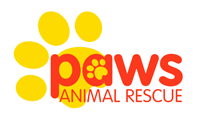How to train your dog to wear a coat
It’s a bitter cold January! We know we still have to get out and exercise our dogs but when the weather is this frightful, a coat on your dog is delightful. Here’s a how to guide to introduce and get your dog to wear one.
First thing first, find out if you dog actually needs one, many Inuit breeds like Eskimo dogs, huskies, German shepherds, newfoundlands and other thick coated dog won’t need one. However, your dog will need a coat if it is particularly young or elderly, or has a thinner coat like a Hungarian viscla, Jack Russell terrier, labrador and in particular, all the sighthound breeds like lurcher, whippets, deerhound and greyhounds that need thick, weatherproof coats at this time of year. It’s safe to say, when it comes to the thinner coated breeds, if you feel you need a coat, they need a coat!
Many dogs don’t like the idea of coats, or may feel restricted in them, no matter how badly they need them. The trick to training your dog to tolerated them, much like introducing your dog to anything potentially stressful, is to take it very slow with lots of delicious treats.
When training your dog to do anything that involves changing their emotional response to anything, it’s best to use very tasty treats that they don’t get often, like cheese or hotdog!
Start by simply laying the dog coat on the floor. It would be best to do this when your dog is particularly calm like after they’ve already been exercised or chased a ball for a few minutes so they have burned their excess energy and feel relaxed.
Place the coat a few feet away from your dog and don’t force them anywhere near it. If they show signs of stress towards the coat, such as licking their lips, backing away or stiff in their body posture, you need to move the coat further away from them. However, if they remain calm and even look at the coat without showing signs of discomfort, toss or give them some treats and praise. This is starting them on the journey of associating the dog coat with positivity and lots of rewards.
Your dog doesn’t need to walk up to the coat or even sniff it, remember to take it slow. A quick glance from your dog without any major averse reactions will do, for you to reward him with treats. After repeating this a few times, move the coat slightly closer to your dog. Still keep a good distance and go at your dog’s pace. If he goes to shy away or start reacting stressed towards it, go back to the early steps again. Continue with this exercise, moving the coat closer and closer to your dog and reaching with treats and praise whenever he has a good reaction to it.
Build this up so when your dog is able to sniff it or be close to the coat on the ground, that you can eventually pick it up and start to touch his legs with the coat. Do not put it on him unti he does not react negatively towards you doing this. Remember, to stop what you’re doing and going back to the first step if he runs away or begins to act uncomfortable with you touching the coat off his legs. We suggest touching it off his front legs first so he can see what you’re doing.
Eventually, move up to placing the coat on your dog’s back. Do not fasten it yet, you’re still just rewarding your dog with treats when he allows the coat near him without putting pressure on him.
If he stands there and does nothing, give him a treat and lots of praise! If he seems only mildly stressed, take the coat away and then, holding a treat near his nose, try touching him again very gently with it. If he seems very stressed, go back to the previous step, where he gets rewarded just for looking at the coat.
Once you can touch your dog with the coat, try petting him with the coat in your hand. If he doesn’t move or show any sign of stress, treat him.You get the idea. The key is baby steps. Take your time and don’t rush moving on to the next step. Soon, your dog will connect the dots and realize everything to do with the coat results in treats! You can do this with almost anything your dog has a negative reaction to. Once your dog knows they can trust you to read their stress or discomfort signals when they are fearful of something and it is taken slow, your dog can learn to tolerate most things with guidance from you!
Now, you can wrap up and both go out and about remaining toasty warm.




